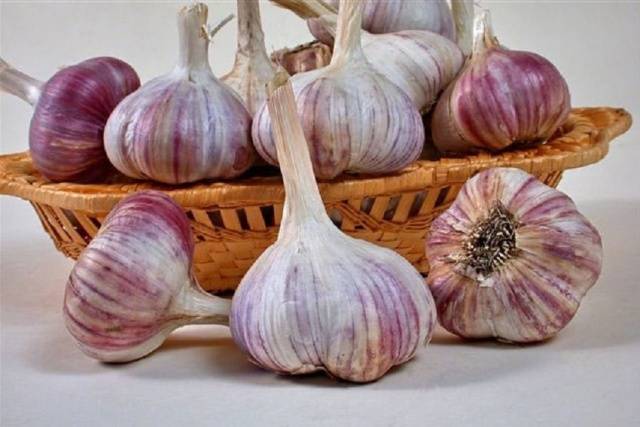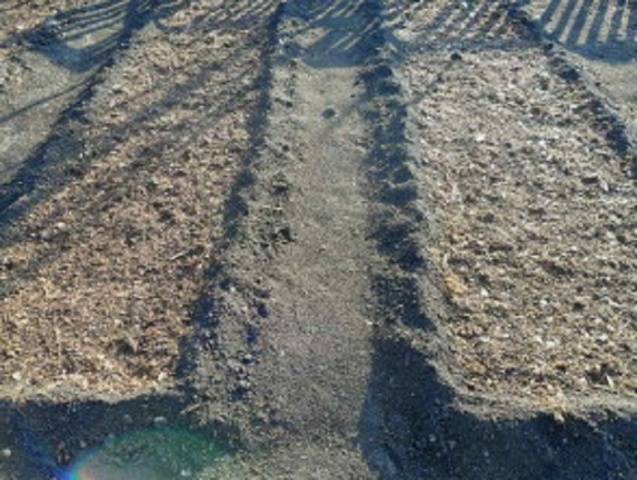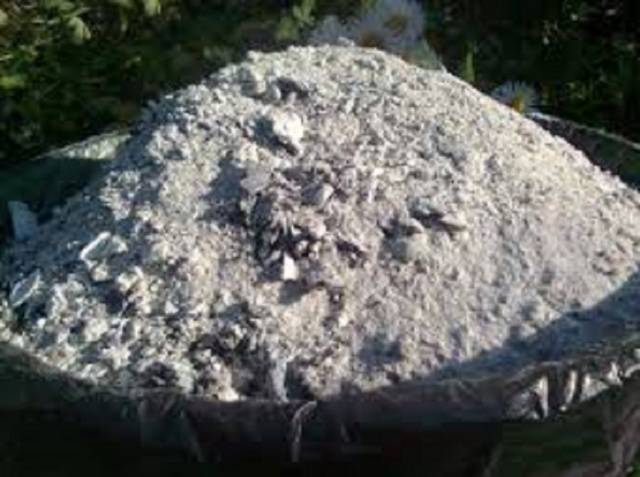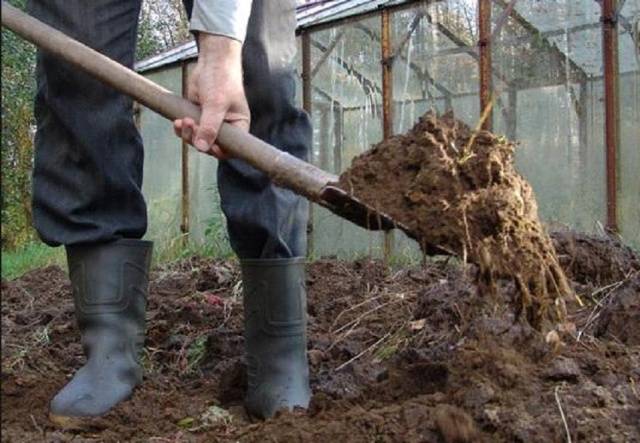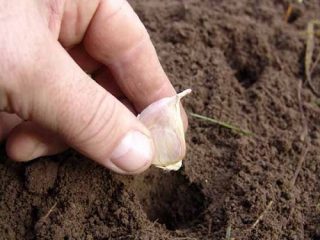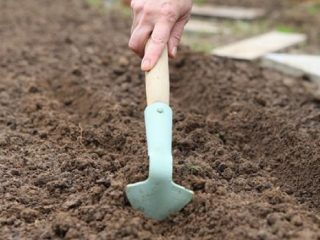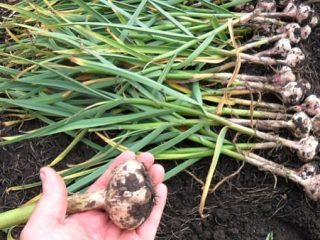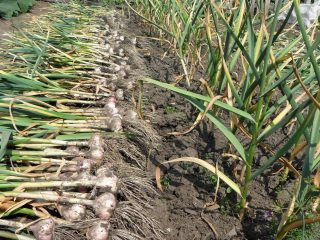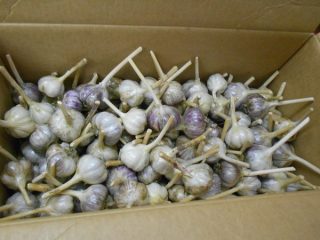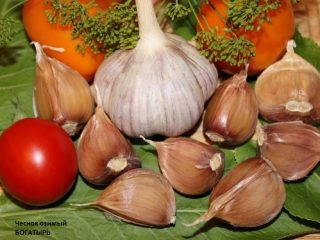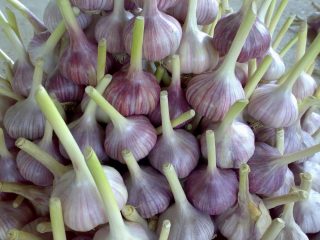Content
When growing garlic, two planting periods are used - spring and autumn. Spring crops are planted in spring, winter crops are planted in autumn.
The agricultural technology for cultivating crops at different planting times is not particularly different, but the nutritional components for each type of garlic are required in a certain composition. High-quality fertilizing plays an important role. Firstly, during the growing season, the plant consumes nutritional components from the soil, so they need to be replenished. Secondly, crop rotation. The gardener has to take into account the nutritional needs of the previous crop so as not to leave garlic without a necessary component. After all, each culture consumes “its own” set. Fertilizing garlic in the fall is needed to replenish the missing elements.
The main thing is that organic matter is added to them in sufficient quantities.
Timing for application of autumn food
The preparation of beds for planting garlic begins in advance.
Usually they start preparing the place 2 weeks before planting the garlic cloves. At the same time, you need to have time to carry out all the work before the vacant land begins to be overgrown with ubiquitous weeds. After harvesting the previous crop, tidy up the garden bed:
- remove all plant debris and roots;
- disinfect the soil;
- digging the ground deeply.
As soon as all roots and plant remains are removed from the bed, water it with a solution of copper sulfate. For disinfection, take one tablespoon of the substance per bucket of water. And only then proceed to the next operation. It is at the moment of digging that it is best to add the necessary fertilizer for garlic taking into account the condition of the soil. Do not dig or fertilize just before planting garlic. The soil will still be loose and there is a danger of planting material being too deep.
Also, do not leave the area being prepared unattended. It is necessary to regularly water the garden bed and remove emerging weeds.
Planting winter garlic requires careful attention to soil fertility.
Preparatory autumn activities for the garlic bed
To grow large heads of spicy garlic, no special knowledge is required, but experienced vegetable growers advise not to neglect feeding. Gardeners know that to get a good garlic harvest, it requires a sufficient amount of nutrients. In addition to the planting date and predecessors, the composition and fertility of the soil is of great importance. After all, winter garlic does not like soil with high acidity at all - its foliage turns yellow. Therefore, before you start fertilizing, it is necessary to reduce the acidity of the soil. Winter garlic is planted in neutral and fertile soil.
You can check the acidity of the soil on the site without complex analyzes and the involvement of special structures. There are traditional methods:
- observation of a set of herbs growing on the site;
- use of chalk;
- using table vinegar;
- according to the reaction of the soil in the infusion of currant or cherry leaves.
Summer residents use indicator strips, which can be purchased at the store.
If there is acidic soil in the area under the garlic bed, then liming should be done (within reasonable limits) or a substance with a high calcium content should be added. Wood ash can replace these components. This is an indispensable assistant for a summer resident throughout the entire gardening season and a unique fertilizer.
Useful additives per square meter of area for different soil compositions:
- a bucket of sand and peat for heavy and clayey soils;
- a bucket of crushed clay and peat for sandy loam and sandy loam;
- the same volume of loam and sand for peat swamp.
Timely application of the necessary fertilizers in early autumn will improve the structure of the soil and give it the opportunity to settle and compact. And the applied fertilizer will have time to dissolve well in order to transform into a form acceptable for garlic nutrition.
We are putting together a nutritional kit for autumn feeding
Advance preparation beds for planting garlic allows you to add the necessary elements on time. Gardeners use organic matter and mineral fertilizers. Garlic responds well to any diet. There are a lot of fertilizer schemes and each has been tested by the experience of summer residents on their plots: It is important to introduce well-ripened organic matter:
- When digging, it is good to add superphosphate (20 g) and humus (5 kg) per square meter of area.
- Compost or aged manure within 4-5 kg, potassium salt (25 g), double superphosphate in granules (35 g).
Compost prepared independently can be added in larger quantities. This fertilizer is added when digging up to 11 kg per 1 square meter. meter. Well-ripened compost is the optimal organic fertilizer for a summer cottage. Vegetable growers themselves can control the composition and quality of the nutritional composition.
How to properly fertilize? The organic matter mixed with the other components is evenly distributed over the surface of the soil and the soil is carefully dug up to the depth of a spade bayonet.
In addition to the above compounds, fertilizers for garlic in the fall work well in the following ratios:
- Mix potassium salt (20 g) and granulated superphosphate (30 g) with half a bucket of humus. If the soil is clayey, add a bucket of peat to the composition. The ratio of components is given per 1 square meter of area.
- For the same area, you can take a bucket of humus and add wood ash (0.5 l) to it, potassium sulfate (a couple of tablespoons) and double superphosphate in the amount of one tablespoon.
You can also fertilize the soil with other types of rotted organic matter (leaves, grass) in an amount of 3 kg mixed with wood ash, superphosphate and nitrophoska. You will need 1 tablespoon of each component.
For nitrogen components, take urea, ammonium, calcium or sodium nitrate. And the amount of these components should be two times less than phosphorus-potassium ones.
Complex mineral fertilizer is a great help for vegetable growers in the absence of organic matter on the plot.
Tips for vegetable growers
If the previous crops received a sufficient amount of fertilizing, then do not get carried away fertilizers before planting garlic. In this case, fewer nutritional components will benefit the garlic.
In the autumn, chemicals are applied in dry form so that penetration into the soil is gradual.
Compliance with the garlic feeding schedule guarantees a good harvest of healthy and large heads.
